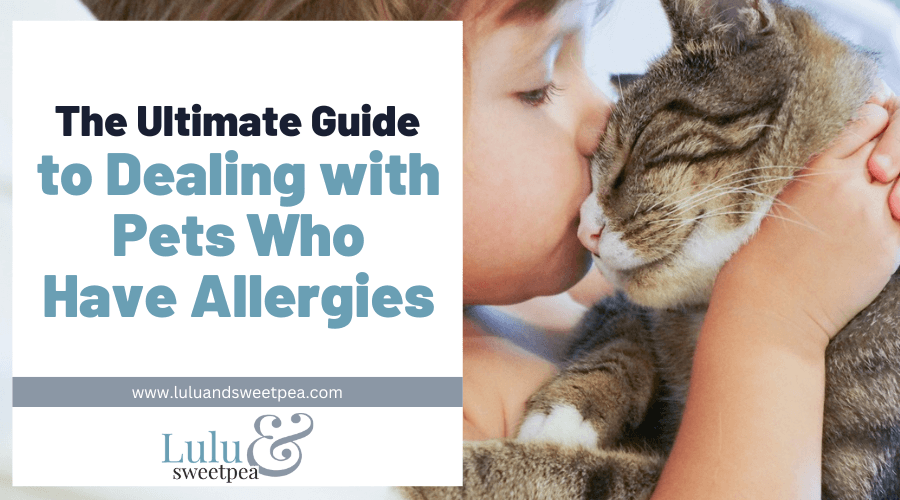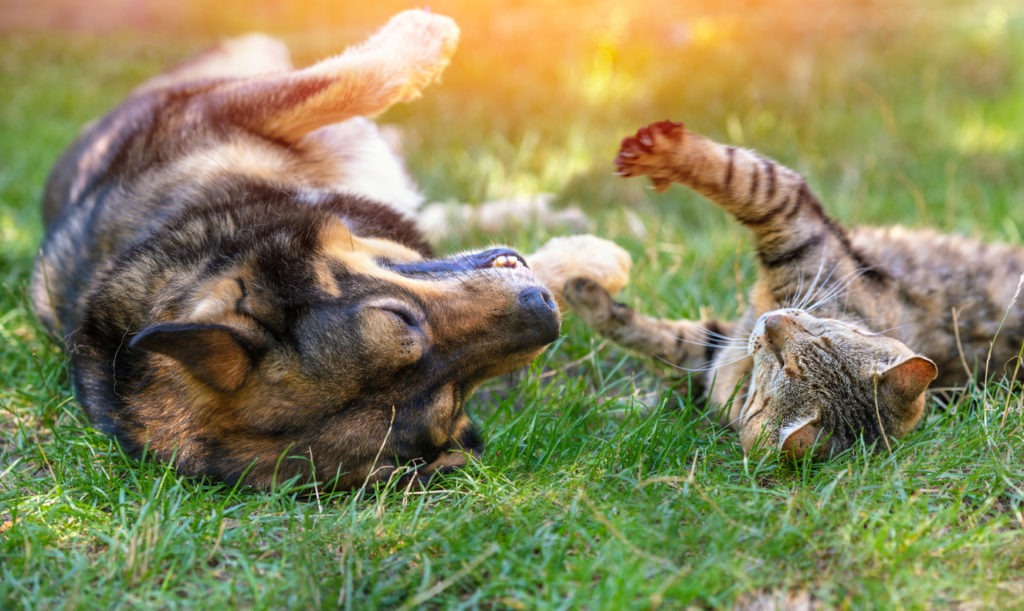Allergy affects pets and people. It usually happens when the immune system mistakes substances in the environment to be harmful and tries to fight them.
Pet owners should know how to observe the symptoms of allergies and ways to deal with them. They may also get tips on what to do if a household member is allergic to pets.
Your pets could be allergic to pollen, dust, mold, smoke, dander, grass, perfume, and certain foods or ingredients. Pets may also have reactions to plants if they consume particular ones.
For pet owners, keep an eye out for the following pet allergy symptoms. Dog and cat allergy symptoms similarly present themselves.
- Swollen pads
- Paw chewing
- Constant licking
- Sneezing and wheezing
- Red, watery, or crusty eyes
- Excessive itching and scabby skin
- Vomiting and diarrhea (usually associated with food allergies)
- Itching, red and irritated skin, obsessive licking, hair loss, hot spots, and many more (usually associated with seasonal allergies)
It is better to know what is causing their allergies. After all, getting close to your pet is the best treatment.
Airborne Allergens
Airborne allergens may come from pollens or particles from grass, trees, dust, cleaning products, or mold. If you observe your pet flare-up from airborne allergens, your vet will likely recommend allergy shots to help your pet build up resistance to the allergens.
Here are some guides to deal with the airborne allergens of your pet.
- Special shampoos and sprays containing aloe, oatmeal, and other skin-soothing ingredients may control the itch.
- Keeping a dust-free home can help alleviate allergies caused by dust, dander, pollen, or other outdoor allergens.
- Regularly bathing your pet can also really help ease the itchy-scratchies. It will clear the irritating particles away from the skin to prevent reactions.
- Have pet feed supplements rich in omega-3 and biotin.
- If atopy, then medical therapy is required to control the itching. The most helpful agents to control allergies are cortisone-based drugs. Another is the use of flea control in your atopic pet. The presence of fleas may aggravate the underlying allergy.
Remember, excessive shampooing can further dry out and aggravate your pet’s skin, so you will want something that will not strip away the natural moisture.
Food allergies
The common signs of food allergies are chronic ear inflammation, gastrointestinal problems, licking their feet, itchy rear end, and chronic diarrhea to gastritis. Food allergies are usually a genetic problem, and when triggered, it is by exposure to whatever they are allergic to. The most common allergens are beef, dairy, wheat, egg, chicken, lamb, soy, pork, rabbit, and fish. Most dogs are usually allergic to more than one thing.
Veterinarians may suggest some guides to deal food allergies of your pet.
- Certain bagged or canned foods for pets with food allergies do not contain the ingredients inducing their flare-ups. It is even advisable to feed home-cooked meals to pets with food allergies.
- Veterinarians usually recommend an elimination diet to determine what substance is causing a reaction. It may include switching to a prescription or hydrolyzed protein food, which does not contain any allergy-triggering ingredients. If your veterinarian prescribes an elimination diet, you must feed only the recommended diet until the food allergy symptoms are not already observable.
- If an elimination diet improves the clinical signs and the owner can find two to three diets the dog can tolerate, vets recommend rotating through them every two to three months. It is to keep them stable for months to years so you can eventually do their challenge testing to identify what your pet is allergic to.
- To prevent the development of food allergies in puppies and kittens, put them on probiotics for up to six months to one year of age and give them a diet that is high in variety.
Seasonal Allergies
Humans are not the only ones facing itchy skin, watery eyes, and runny noses this time of year, the spring. Your pet may also be allergic to all that springtime beauty.
If a pet only gets itchy at certain times of the year, the chances are your pet suffers from seasonal/environmental allergies.
Here are helpful guides to deal with seasonal changes in your pet.
- For immediate relief from itchiness, try to wash away the allergens on his coat and skin by giving him frequent baths. Look for a dog shampoo specially formulated for inflamed or sensitive skin.
- Wash his paws thoroughly each time he comes inside the house to lessen the spread of allergens. In times of high pollen and other allergens, you can have a portable paw wash near entryways.
- Clean and vacuum the floors, bedding, or any spot in your place where your pets spend most of their time. You may use non-toxic house cleaning agents.
- Let your pet eat a well-balanced, species-appropriate diet free of unnecessary fillers and animal by-products.
- If a pet is highly susceptible to seasonal allergies, a diet low in grain content is best since foods rich in carbohydrates can trigger and worsen inflammation.
- For mild allergic reactions and itching, your vet can recommend an antihistamine or provide the proper dosage of over-the-counter allergy medication to treat your pet.
Pet Allergies in People
Are you experiencing allergy symptoms around your pet? Their hair, dander, and saliva can cause allergic reactions in humans, but something concentrated in the fur, like dust or pollen, may also be at the root of the problem.
Seeing a doctor for allergy testing is the only way to determine if it is the pet or particles in the fur causing you or a family member to react.
Here are some guides to dealing with pet allergies.
- Regularly bathing a pet may help keep the allergens out of their fur.
- Preventative methods, like allergy medications, regular house cleaning, or limited interaction between the afflicted individual and your pet, may help alleviate mild to moderate reactions to the pet itself.
- Keep your pet well-groomed. Fewer loose hairs mean less hair left on the carpet and floating through the air in your home. When pets shed, they typically shed dander as well, which is what causes allergic reactions.
- Sweep and vacuum often. You can find special vacuum cleaners for picking up pet hair at most large retail stores.
- Wash your hands often. Scrubbing up throughout the day will help prevent pet allergens from coming into contact with your eyes, nose, and mouth.
- Ask a doctor for medication. Your physician can give recommendations for over-the-counter antihistamines or creams containing cortisone. They can also prescribe medication if the problem persists and administer regular allergy shots.
In addition, did you know pets can help protect kids from developing allergies? If you or one of your human family members have pet allergies, you might want to look into breeds that shed less. Lightly-shedding dogs and cats may produce fewer allergens.
Finally, if you suspect your pet has allergies, you should consult your veterinarian at the soonest time. They can help confirm that allergies are the problem. They can also provide you with tips on how to prevent allergy symptoms. Nonetheless, when it concerns your pet’s health, it is always better to be safe than sorry.



